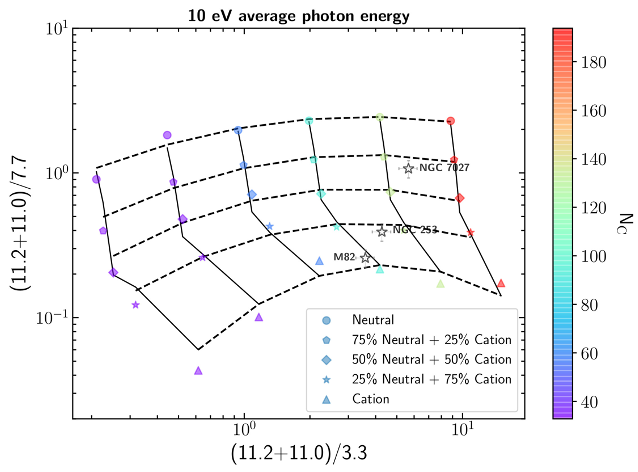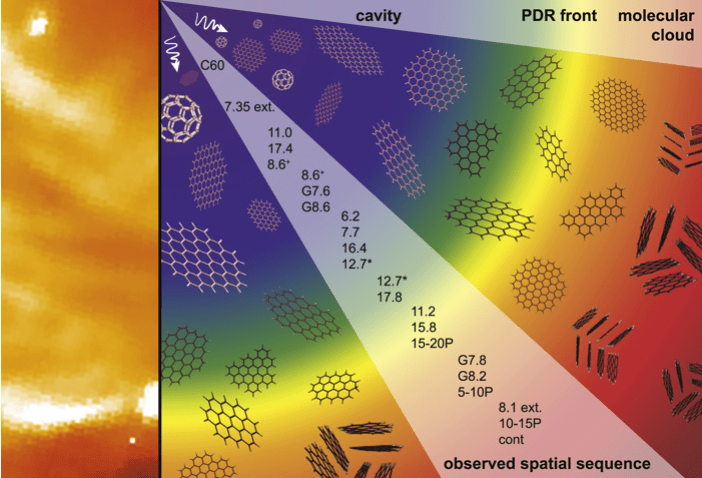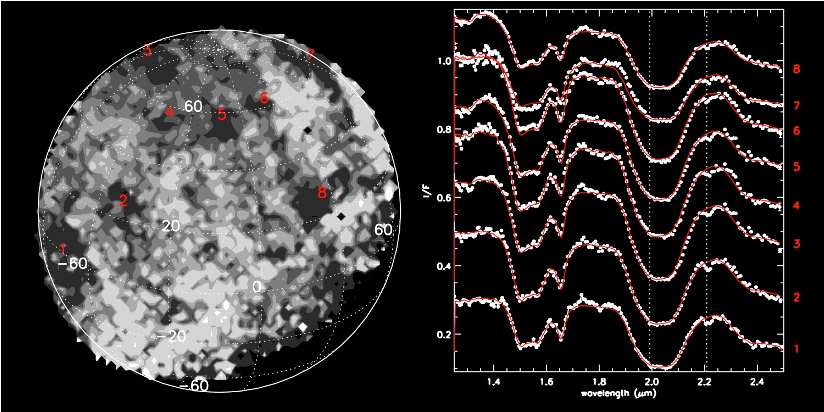Modeling Laboratory
Member: Alessandra Ricca
Objectives:
- Characterize the infrared, Raman, and UV-Vis spectral characteristics of astrophysically-relevant polycyclic aromatic hydrocarbons (PAHs), clusters, and nanograins, and study their photochemical evolution in the interstellar medium, dense clouds, and on planetary surfaces.
- Compute near-IR spectral signatures of planetary ice analogs for Pluto and Charon surface studies.
- Model the formation of gas-phase molecules in planetary atmospheres.
Facilities:
The High-End Computing Capability (HECC) at the NASA Advanced Supercomputing (NAS) Division of NASA Ames Research Center provides:
- World-class computing
- Storage
- Visualization resources
Software:
- Gaussian16
- Molpro
- VASP
- LAMMPS
- Octopus
Objective 1. Characterize the infrared (IR), Raman, and UV-Vis spectral characteristics of astrophysically-relevant polycyclic aromatic hydrocarbons (PAHs), clusters, and nanograins, and study their photochemical evolution in the interstellar medium, dense clouds, and on planetary surfaces.
Methodology:
- Compute the zero-Kelvin absorption spectra (IR, Raman, UV-Vis)
- Compare the computed absorption spectra with JWST data of Young Stellar Objects (YSOs)
- Compute emission spectra and compare with SOFIA and JWST data of astrophysical sources, constrain the emitters of the astrophysical 3-20 microns IR bands and link the variations of the observed features to PAH size and charge (Fig. 1)
- Understand the photochemical evolution of the PAH populations in the interstellar medium (Fig. 2), dense clouds, and planetary surfaces
Missions supported: SOFIA, JWST, Cassini, New Horizons
Objective 2. Compute near-IR spectral signatures of planetary ice analogs for Pluto and Charon surface studies.
Methodology:
- Compute the zero-Kelvin near-IR anharmonic absorption spectra of pure and mixed ices relevant to Pluto and Charon
- Correlate changes in spectral features with chemical composition, mixing ratios, crystallinity
- Compare the computed spectra with available laboratory data and New Horizons data (Fig. 3).
Mission supported: New Horizons
Objective 3. Model the formation of gas-phase molecules in planetary atmospheres and exoplanets.
Methodology:
- Compute accurate gas-phase reaction pathways, rate coefficients, and thermodynamic properties
- Interpret mission data
Missions supported: TESS, JWST, WFIRST
List of publications here.




























